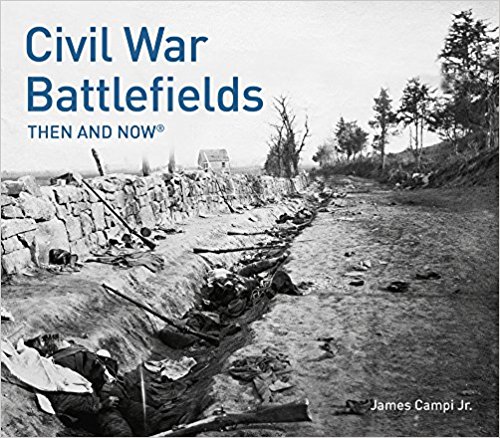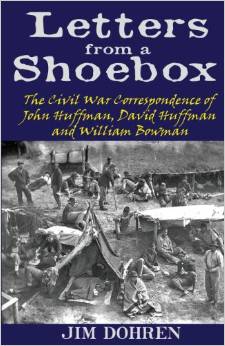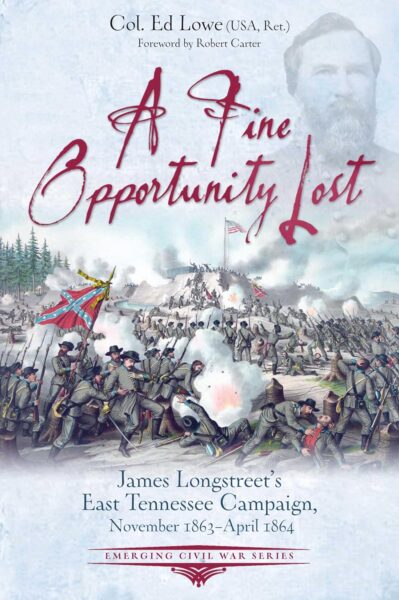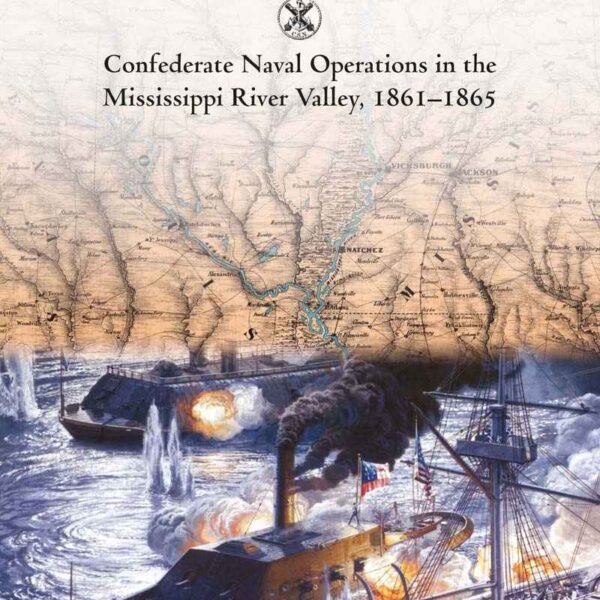Civil War Battlefields: Then and Now by James Campi, Jr. Pavilion Books, 2016. Cloth, ISBN: 978-1-9109048-0-0. $19.95.
 Celebrated Civil War photographer Alexander Gardner noted at the conflict’s end that his work was “designed to speak for itself as mementos of the fearful struggle through which the country has just passed.” “It is confidently hoped,” he continued, “that [these photographs] will possess an enduring interest.” Indeed, historic photos allow us to process and comprehend the deprivations and destruction of war in a way that other primary sources do not. According to the introduction in James Campi’s latest edition of his Civil War Battlefields: Then and Now, “These early pioneers in the profession of war photography were able to invoke painful emotions with their images of the people, places, and events of the Civil War” (5).
Celebrated Civil War photographer Alexander Gardner noted at the conflict’s end that his work was “designed to speak for itself as mementos of the fearful struggle through which the country has just passed.” “It is confidently hoped,” he continued, “that [these photographs] will possess an enduring interest.” Indeed, historic photos allow us to process and comprehend the deprivations and destruction of war in a way that other primary sources do not. According to the introduction in James Campi’s latest edition of his Civil War Battlefields: Then and Now, “These early pioneers in the profession of war photography were able to invoke painful emotions with their images of the people, places, and events of the Civil War” (5).
Many of the period’s photographers considered themselves artists conveying a story, not objective journalists reporting a news piece. While the author claims that many of the conflict’s photos have been lost, the thousands that remain were saved thanks to the foresight of the federal government following the war. Many of these photographic treasures are highlighted in Campi’s book, as he takes us on a visual, “then and now” journey of America’s bloodiest conflagration. The author, who serves as the government and public relations liaison at the Civil War Trust, approaches his subject matter as a preservationist at heart. This is one of the great strengths of the book, especially for general audiences who might not otherwise be aware of modern threats to Civil War battlefields.
Readers of The Civil War Monitor may be familiar with the first edition of Campi’s illustrated work, which was published by Thunder Bay Press in 2002. The publisher is well known for its “Then and Now” series, which usually encompass historic cities such as New Orleans and New York. In regard to its scope, a book devoted to Civil War battlegrounds scattered throughout the country is somewhat of a specialty item.
In an interview with this reviewer, Campi noted, “The revamp of the book was exciting because it enabled me to work with the publisher to include considerably more images. The Civil War-era ‘then’ images continue to dominate the book, but the new format allowed for more accompanying images and maps that help tell the story better.” Concise biographies of notable personalities such as Ulysses Grant and “Stonewall” Jackson accompany photographs of the sites where they earned their fame. Additional images of maps, broadsides, and letters offer human context to the black and white landscape photos. Through photographs—primarily from the Library of Congress, the National Archives, and the U. S. Army Military History Institute—the author effectively paints a stirring portrait of a nation at war, but he also demonstrates how the American landscape has dramatically evolved (sometimes for the worse) over the course of a century and a half.
Predictably, this photographic history takes readers on a chronological journey through the war’s most iconic battles. Famous wet plate images from Fort Sumter to Appomattox grace its pages. Examples of both excellent and poor historical preservation abound within these sections. While some sites remain largely unchanged from the 1860s, other battlefields have not been nearly as fortunate. Much of the Petersburg battlefield has been utterly destroyed, and is now populated by abandoned shopping centers, parking lots, and railroad underpasses. Other locales, such as Fort Negley in Nashville, were long neglected and stand as shadows of what they once were. The photographs in this book aptly illustrate the inevitable seesaw of emotions preservationists feel as they explore these hallowed grounds.
The latest edition of the book has been released in two, equally handy formats. A cloth, coffee table version that measures 10×12 inches serves well for casual Civil War reading and classroom use; meanwhile, a compact, paperback edition is ideal for battlefield expeditions on foot. This encourages Civil War aficionados to view the battlefields for themselves.
Campi acknowledges that hardcore Civil War buffs may not learn many new facts in this book, and that is okay. This book is largely intended for the casual historian and leisurely tourist in the hope that its photographs may serve as a platform for discussion and engagement. Campi remarked that, “there are few better tools in the battlefield preservation toolbox than photographs.” The incorporation of vintage photographs in the Civil War Trust’s effort to save and interpret Robert E. Lee’s Gettysburg headquarters stands as just one stirring example of how photographic sources can be utilized for advocacy. In that light, Civil War Battlefields acts as a most useful educational asset for broad audiences.
Jared Frederick is an Instructor of History at Penn State Altoona.



